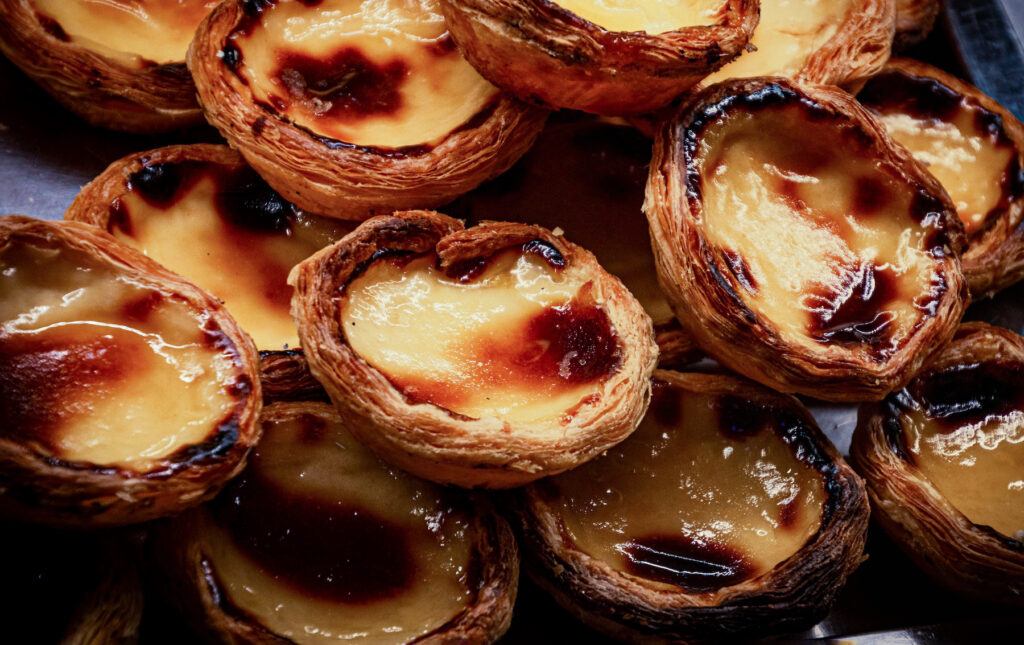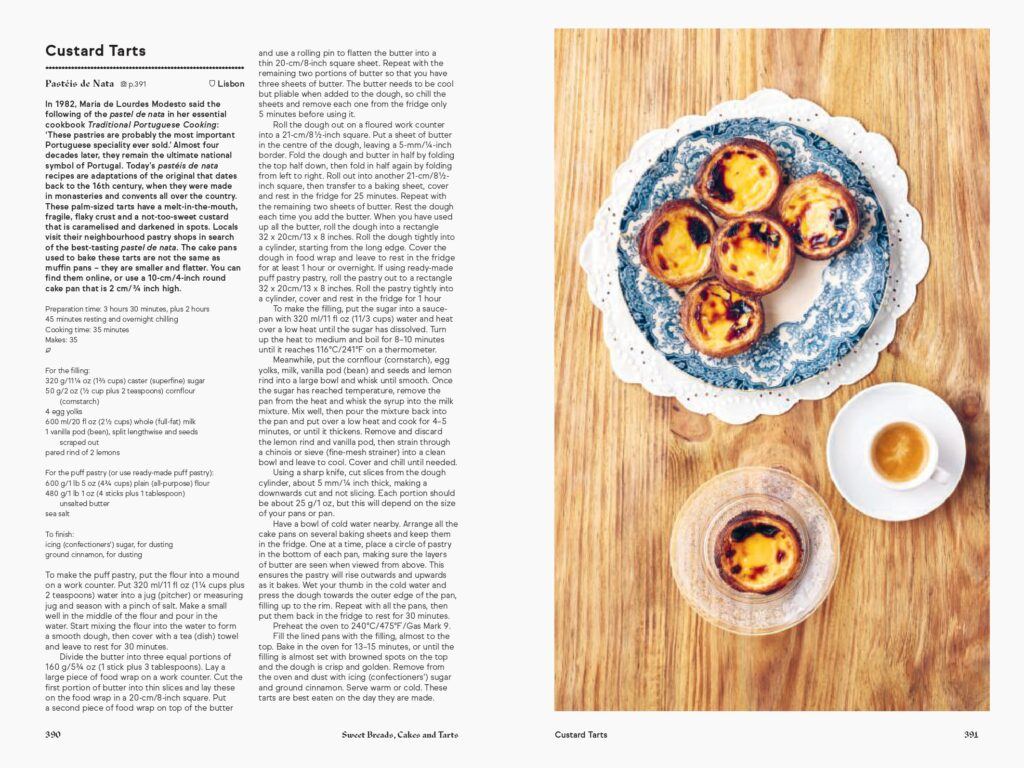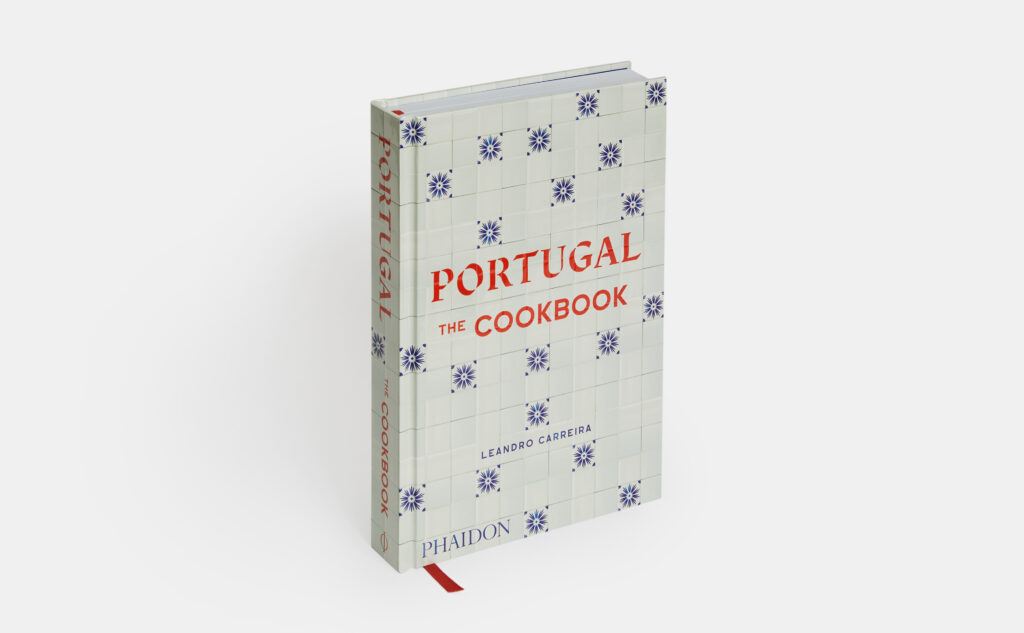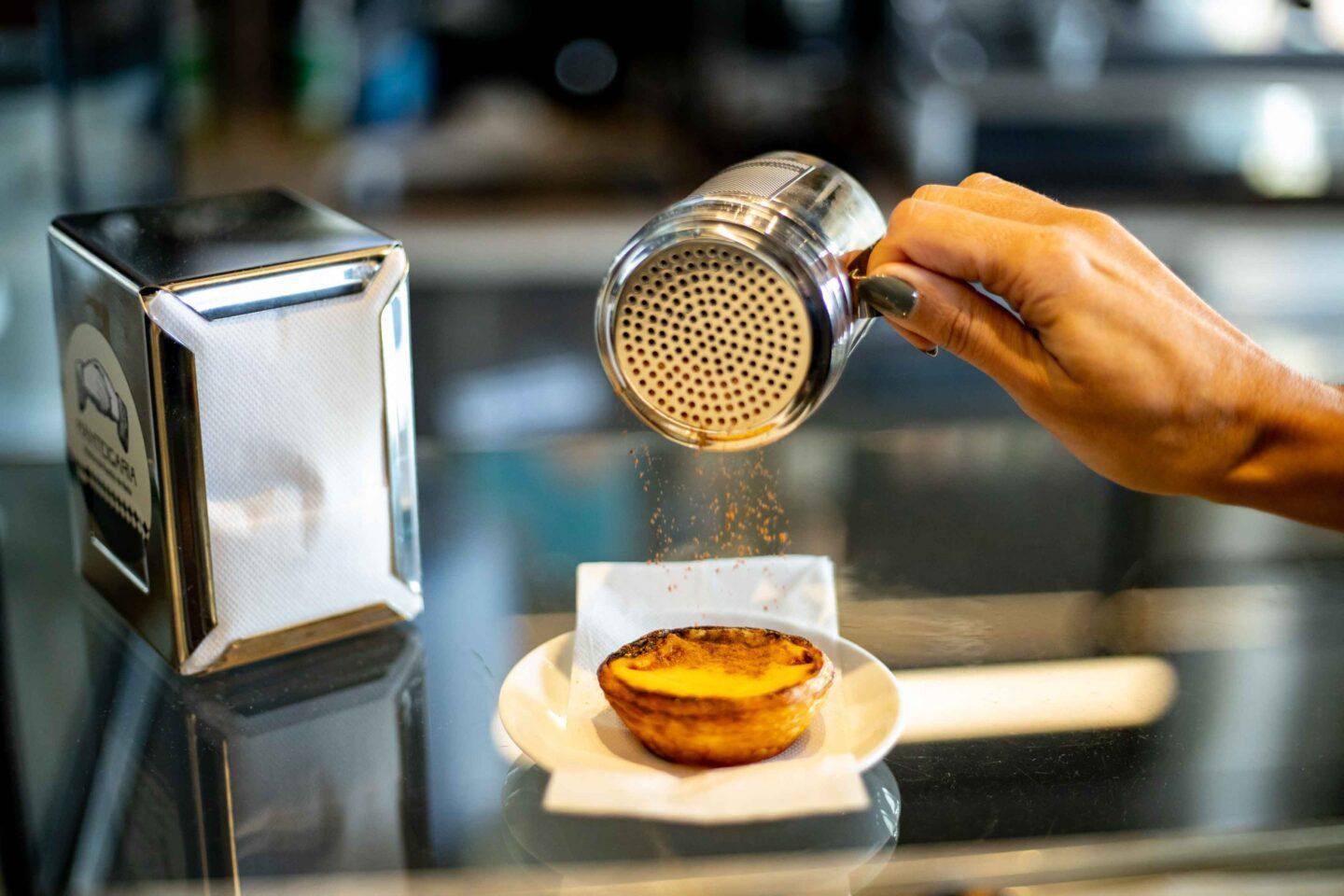In 1982, Maria de Lourdes Modesto said the following of the pastel de nata in her essential cookbook Traditional Portuguese Cooking: “These pastries are probably the most important Portuguese speciality ever sold.” Almost four decades later, they remain the ultimate symbol of Portuguese cuisine.
Today’s pastéis de nata recipes are adaptations of the original that dates back to the 16th century, when they were made in monasteries and convents all over the country.
These palm-sized tarts have a melt-in-the-mouth, fragile, flaky crust and a not-too-sweet custard that is caramelised and darkened in spots. Locals visit their neighbourhood pastry shops in search of the best-tasting pastel de nata. The cake pans used to bake these tarts are not the same as muffin pans – they are smaller and flatter. You can find them online, or use a 10-cm/4-inch round cake pan that is 2 cm/3⁄4 inch high.
Recipe
Preparation time: 3 hours 30 minutes, plus 2 hours 45 minutes resting and overnight chilling
Cooking time: 35 minutes
Makes: 35
For the filling:
320 g/111⁄4 oz (12⁄3 cups) caster (superfine)
sugar 50 g/2 oz (1⁄2 cup plus 2 teaspoons)
cornflour (cornstarch)
4 egg yolks
600 ml/20 fl oz (21⁄2 cups) whole (full-fat) milk
1 vanilla pod (bean), split lengthwise and seeds scraped out
pared rind of 2 lemons
For the puff pastry (or use ready-made puff pastry):
600 g/1 lb 5 oz (43⁄4 cups) plain (all-purpose) flour
480 g/1 lb 1 oz (4 sticks plus 1 tablespoon)
unsalted butter, sea salt
To finish:
icing (confectioners’) sugar, for dusting
ground cinnamon, for dusting

Method
To make the puff pastry, put the flour into a mound on a work counter. Put 320 ml/11 fl oz (11⁄4 cups plus 2 teaspoons) water into a jug (pitcher) or measuring jug and season with a pinch of salt. Make a small
well in the middle of the flour and pour in the water. Start mixing the flour into the water to form a smooth dough, then cover with a tea (dish) towel and leave to rest for 30 minutes.
Divide the butter into three equal portions of 160 g/53⁄4 oz (1 stick plus 3 tablespoons). Lay a large piece of food wrap on a work counter. Cut the first portion of butter into thin slices and lay these on the food wrap in a 20-cm/8-inch square. Put a second piece of food wrap on top of the butter and use a rolling pin to flatten the butter into a thin 20-cm/8-inch square sheet. Repeat with the remaining two portions of butter so that you have three sheets of butter. The butter needs to be cool but pliable when added to the dough, so chill the sheets and remove each one from the fridge only 5 minutes before using it.
Roll the dough out on a floured work counter into a 21-cm/81⁄2-inch square. Put a sheet of butter in the centre of the dough, leaving a 5-mm/1⁄4-inch border. Fold the dough and butter in half by folding the top half down, then fold in half again by folding from left to right.
Roll out into another 21-cm/81⁄2- inch square, then transfer to a baking sheet, cover and rest in the fridge for 25 minutes. Repeat with the remaining two sheets of butter. Rest the dough each time you add the butter. When you have used up all the butter, roll the dough into a rectangle 32 x 20cm/13 x 8 inches. Roll the dough tightly into a cylinder, starting from the long edge. Cover the dough in food wrap and leave to rest in the fridge for at least 1 hour or overnight. If using ready-made puff pastry pastry, roll the pastry out to a rectangle 32 x 20cm/13 x 8 inches. Roll the pastry tightly into a cylinder, cover and rest in the fridge for 1 hour.
To make the filling, put the sugar into a sauce- pan with 320 ml/11 fl oz (11/3 cups) water and heat over a low heat until the sugar has dissolved. Turn up the heat to medium and boil for 8–10 minutes until it reaches 116°C/241°F on a thermometer.
Meanwhile, put the cornflour (cornstarch), egg yolks, milk, vanilla pod (bean) and seeds and lemon rind into a large bowl and whisk until smooth. Once the sugar has reached temperature, remove the pan from the heat and whisk the syrup into the milk mixture. Mix well, then pour the mixture back into the pan and put over a low heat and cook for 4–5 minutes, or until it thickens.
Remove and discard the lemon rind and vanilla pod, then strain through a chinois or sieve (fine-mesh strainer) into a clean bowl and leave to cool. Cover and chill until needed.
Using a sharp knife, cut slices from the dough cylinder, about 5 mm/1⁄4 inch thick, making a downwards cut and not slicing. Each portion should be about 25 g/1 oz, but this will depend on the size of your pans or pan.
Have a bowl of cold water nearby. Arrange all the cake pans on several baking sheets and keep them in the fridge. One at a time, place a circle of pastry in the bottom of each pan, making sure the layers of butter are seen when viewed from above.
This ensures the pastry will rise outwards and upwards as it bakes. Wet your thumb in the cold water and press the dough towards the outer edge of the pan, filling up to the rim. Repeat with all the pans, then put them back in the fridge to rest for 30 minutes.
Preheat the oven to 240°C/475°F/Gas Mark 9.
Fill the lined pans with the filling, almost to the top. Bake in the oven for 13–15 minutes, or until the filling is almost set with browned spots on the top and the dough is crisp and golden. Remove from the oven and dust with icing (confectioners’) sugar and ground cinnamon. Serve warm or cold. These tarts are best eaten on the day they are made.

Portugal: The Cookbook
With its diverse cuisine and intriguing culinary history, Portugal is a top travel destination for food lovers worldwide. Portugal: The Cookbook, published by Phaidon, gathers together dishes from every region of the country, including fish and shellfish dishes from the Algarve coast, hearty stews from the Douro Valley, and the famous and beloved pastries of Lisbon. There are more than 550 traditional recipes for home cooks that encapsulate the breadth and diversity of the food of Portugal, a country whose immense culinary influence has spread far beyond its borders.
Chef Leandro Carreira
Leandro Carreira cut his culinary teeth at Andoni Luis Aduriz’s restaurant, Mugaritz, in the Basque region of Spain, before arriving in London and working with Nuno Mendes at Viajante as Head Chef. His residency at Climpson’s Arch in East London, an exploration of regional Portuguese cooking, received five-star reviews. Londrino, his first restaurant, opened in Bermondsey in 2017 and his current project, The Sea, The Sea, in Chelsea has been followed by The Sea, The Sea Chef’s Table in late 2021.
The London-based chef spent three years researching the length and breadth of his home country, from the mountainous north, to the southern beach resorts of the Algarve, and the island outposts of Madeira and the Azores. The result is the most definitive and largest collection of traditional Portuguese recipes translated into English for home cooks.
















